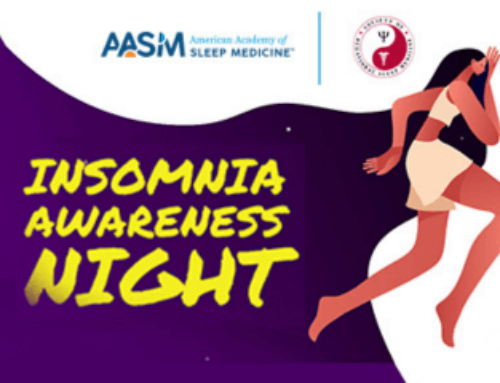FOR IMMEDIATE RELEASE
CONTACT: Lynn Celmer, lcelmer@aasm.org, 630-737-9700
DARIEN, IL – A new study of night shift workers suggests that overnight occupational and cognitive impairment is more strongly correlated to insomnia than it is to sleepiness.
Results show that night shift workers classified as alert insomniacs had the highest level of impairment in work productivity and cognitive function, which was significantly worse than controls. This occupational impairment was more severe in alert insomniacs than in insomniacs with excessive sleepiness. The study also found that alert insomniacs reported significantly greater fatigue than sleepy insomniacs, which emphasizes the clinical importance of distinguishing between fatigue and sleepiness.
“Our findings are important to everyone who is dealing with night shift work,” said principal investigator Valentina Gumenyuk, PhD, who is currently director of the MEG Neuroimaging Center at Meadowlands Hospital in Secaucus, New Jersey. “Our study reaffirms that insomnia within shift work disorder demands clinical attention, and it suggests that treatments focusing on the relief of excessive sleepiness in shift work disorder may not sufficiently improve work-related outcomes.”
Study results are published in the April issue of the Journal of Clinical Sleep Medicine.
According to the American Academy of Sleep Medicine, shift work disorder is associated with a recurring work schedule, such as night shifts or rotating shifts, that overlaps the usual time for sleep. It is characterized by a reduction in total sleep time along with complaints of insomnia or excessive sleepiness. Reduced alertness related to shift work disorder may be a safety hazard during work and while commuting. It has been estimated that approximately 20 percent of the workforce in industrialized countries is employed in a job that requires shift work.
The research was conducted at Henry Ford Hospital in Detroit, Michigan, where Gumenyuk was a research instructor. The final analysis involved 34 permanent night workers, 26 of whom were diagnosed with shift work disorder. Along with lead author Ren Belcher, Gumenyuk conducted an overnight lab protocol in which participants stayed awake for 25 hours in a dimly lit, private room. Participants wore an EEG cap to measure brain activity associated with attention and memory, and an event-related brain potential task assessed functional abilities. Objective sleepiness was assessed with a nocturnal multiple sleep latency test (MSLT). Study subjects also completed questionnaires to evaluate sleepiness, insomnia severity and work productivity.
According to the authors, the impairments found in night shift workers who were alert insomniacs have practical and serious consequences for workplace safety and occupational health. The study results emphasize the importance of aggressively treating insomnia in night shift workers, which may improve work productivity and safety.
Co-author Thomas Roth, PhD, supervised the data analyses and interpretation, and Christopher Drake, PhD, provided additional support for the study.
The study was supported with funding from the National Institute for Occupational Safety and Health (NIOSH), which is part of the Centers for Disease Control and Prevention (CDC).
To request a copy of the study, “Insomnia in Shift Work Disorder Relates to Occupational and Neurophysiological Impairment,” or to arrange an interview with the study author or an AASM spokesperson, please contact Communications Coordinator Lynn Celmer at 630-737-9700, ext. 9364, or lcelmer@aasm.org.
The monthly, peer-reviewed Journal of Clinical Sleep Medicine is the official publication of the American Academy of Sleep Medicine, a professional membership society that improves sleep health and promotes high quality patient centered care through advocacy, education, strategic research, and practice standards (www.aasm.org). The AASM encourages patients to talk to their doctor about sleep problems or visit www.sleepeducation.org for a searchable directory of AASM-accredited sleep centers.




